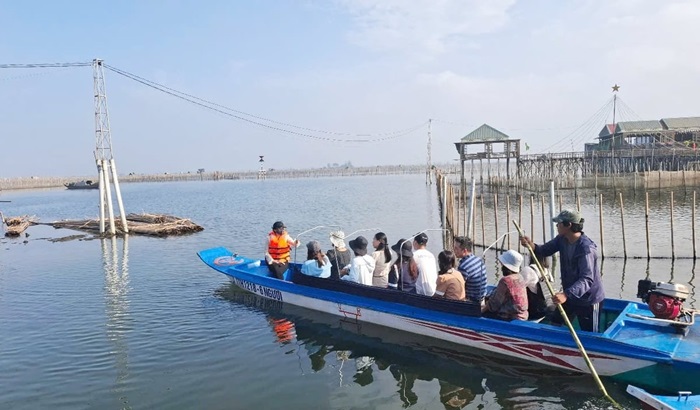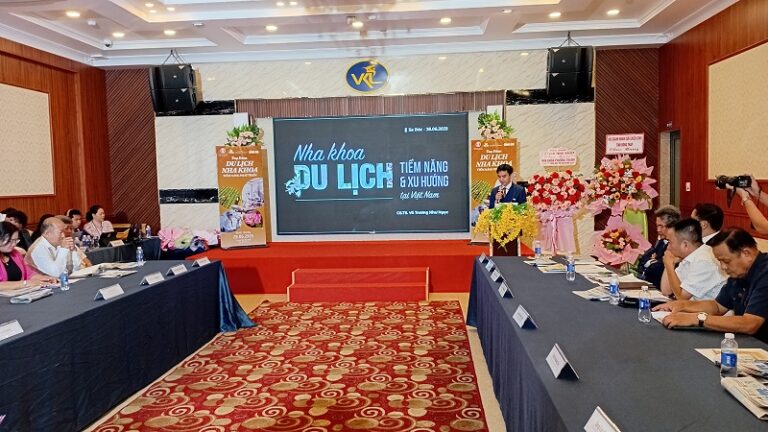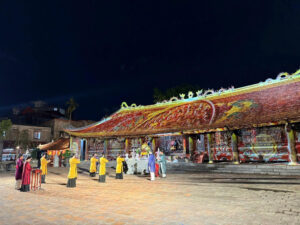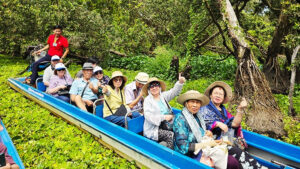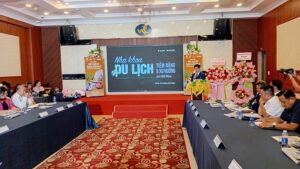20 ethnic minority groups live in Lai Chau province. In the 3 years since the province passed a resolution to preserve and promote the traditional culture of ethnic groups to boost tourism from 2021-2025, with a vision to 2030, local villages have restored many traditional costumes and festivals, which have popularized Lai Chau province as a tourist attraction.
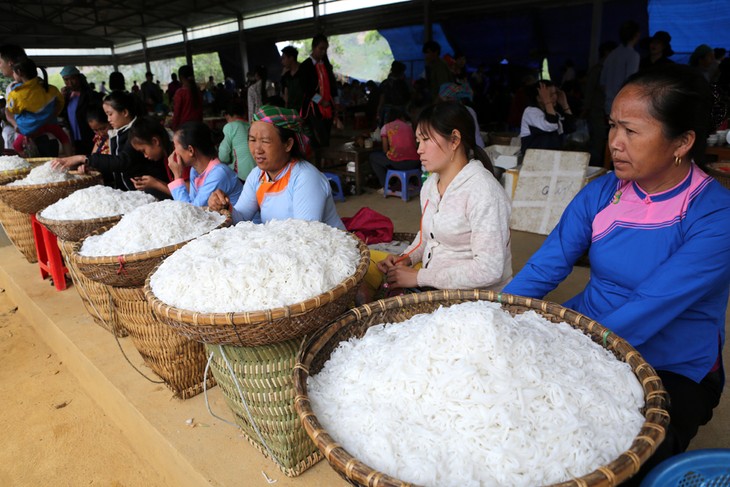
San Thang's markets offer diverse products of the Giay ethnic minority (Photo: VOV)
San Thang 1 village, home to the Giay ethnic minority, has become a popular tourist destination because it has managed to preserve its traditional crafts. San Thang’s night markets and fairs entertain visitors with performances by Giay artists and serve them local dishes – Thang co (horse meat soup), men men (steamed corn), and banh giay (round glutinous rice cakes).
“I’ve heard about Men men, but this is the first time I’ve tried the dish. It has a special taste. It’s a corn dish, but made using a special cooking technique. It’s delicious,” Ta Viet Hung, a visitor from Hanoi, said.
Lai Chau province has the largest population of ethnic minority people – from 17 different ethnic groups. In addition to a project to develop cultural villages based on the cultural values of each locality, the province has invested money in tourism infrastructure and products, including preserving ancient houses and revitalizing ethnic music and crafts.
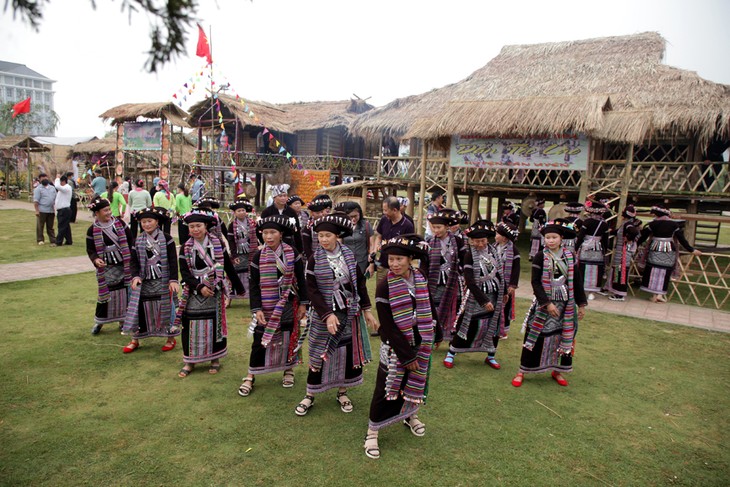
(Photo: VOV)
“We’re focused on preserving the cultures of local ethnic minorities, including Mong, Thai, Giay, and Dao. San Thang commune is working to preserve its traditional markets and performance arts and develop community tourism villages,” Le Xuan Dung, Head of Lai Chau city’s Department of Culture and Information, said.
“Special attention has been given to preserving traditional festivals like the Gau Tao festival (a spring thanksgiving festival) and the Tu Ti festival (to give thanks to the Land Protector God). We have organized classes on the costumes and cuisines of our ethnic minority groups.”
In the three years since the resolution was passed, five of six goals have been met, and a number of cultural heritages have been preserved. Dossiers have been assembled to seek national recognition for two intangible cultural heritages. Districts have found creative ways to promote their own tourism products and attract visitors.
Tran Quang Khai, deputy head of Lai Chau’s Department of Culture, Sports, and Tourism, said the province has developed 16 community tourism villages and restored 30 festivals and handicrafts, and now attracts a great number of visitors each year.
“We will coordinate with the Vietnam National Authority of Tourism to open classes to train local tour guides and raise awareness of the value of ethnic cultural identities as a resource for tourism development,” said Khai.


